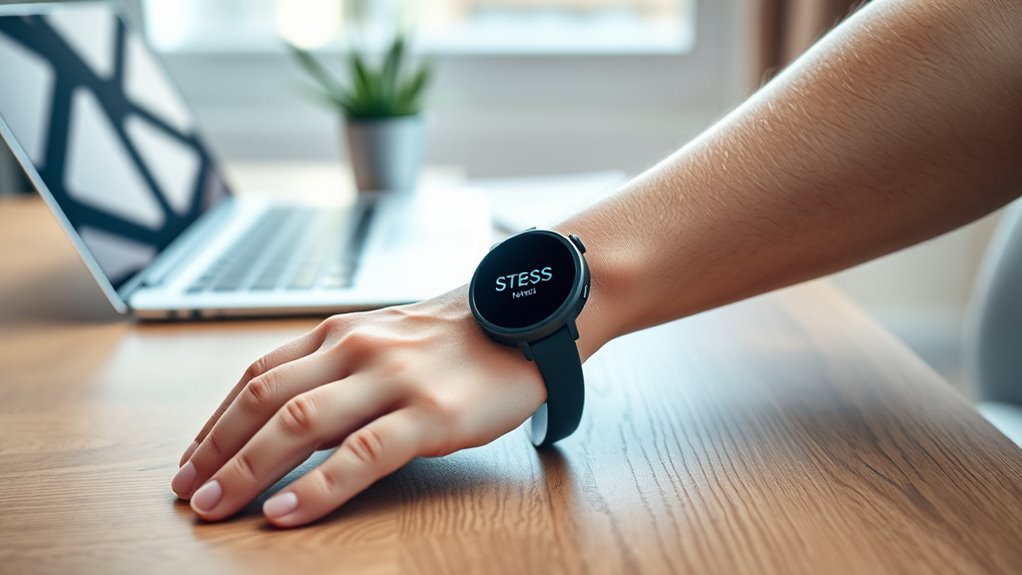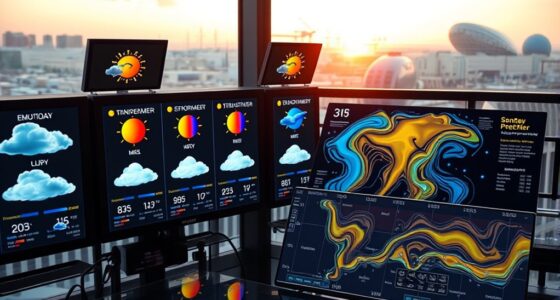Using wearable tech for stress awareness involves monitoring your physiological signals like heart rate, skin conductance, and sleep quality in real-time. These devices analyze biosignals with advanced algorithms to identify stress patterns and provide immediate feedback. Choosing a comfortable, accurate device with good battery life and app compatibility helps you track stress effectively. By understanding your data, you can incorporate relaxation techniques and improve your well-being. Keep exploring to discover even more ways wearable tech can support your mental health.
Key Takeaways
- Wearable devices continuously monitor physiological signals like heart rate and skin conductance to detect stress indicators.
- Accurate sensors and advanced algorithms interpret biosignals, providing real-time stress level assessments.
- Data tracking includes heart rate variability, sleep quality, and physiological responses to identify stress patterns.
- Wearables offer immediate feedback and personalized strategies, such as breathing exercises, to manage stress effectively.
- Future innovations include real-time interventions and adaptive features to enhance stress awareness and emotional resilience.
How Wearable Devices Detect Stress Indicators
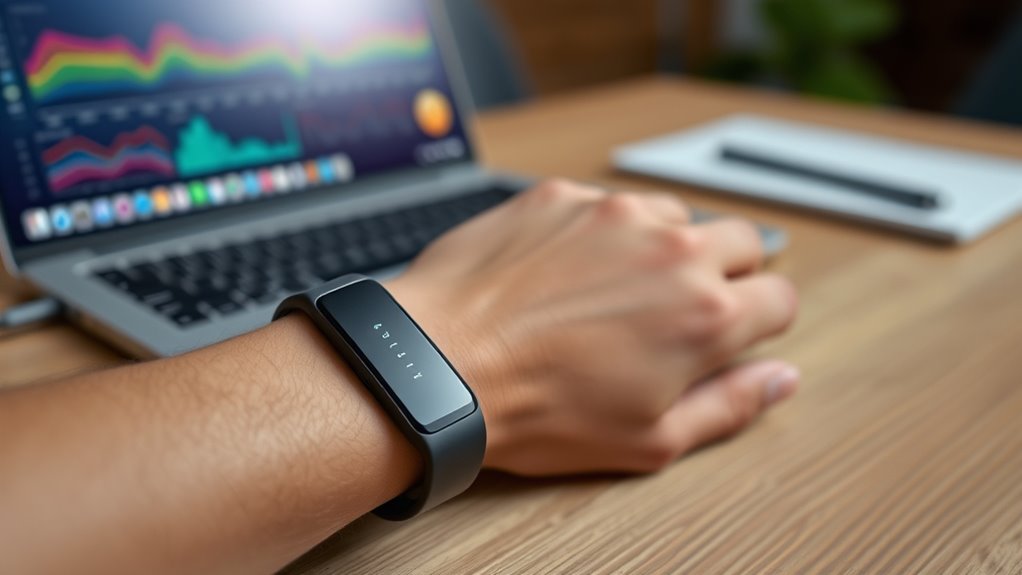
Wearable devices detect stress indicators by continuously monitoring physiological signals that change under stress. Using biosignal analysis, these devices track key stress markers such as heart rate, heart rate variability, skin conductance, and respiration patterns. When you’re stressed, your body exhibits specific changes in these signals, which wearables can identify in real-time. The sensors collect data constantly, allowing the device to analyze fluctuations linked to stress responses. Advanced algorithms interpret these biosignals to determine your stress levels accurately. This seamless monitoring provides immediate feedback, helping you become aware of stress triggers. Real-time analysis enables timely interventions and stress management strategies. By focusing on essential stress markers, wearable technology offers a non-intrusive way to understand your body’s responses, empowering you to manage stress more effectively throughout your day. Robust materials ensure durability and consistent performance, making these devices reliable companions for stress management. Incorporating biosignal analysis enhances the precision of stress detection, ensuring more reliable feedback.
Choosing the Right Wearable for Stress Monitoring
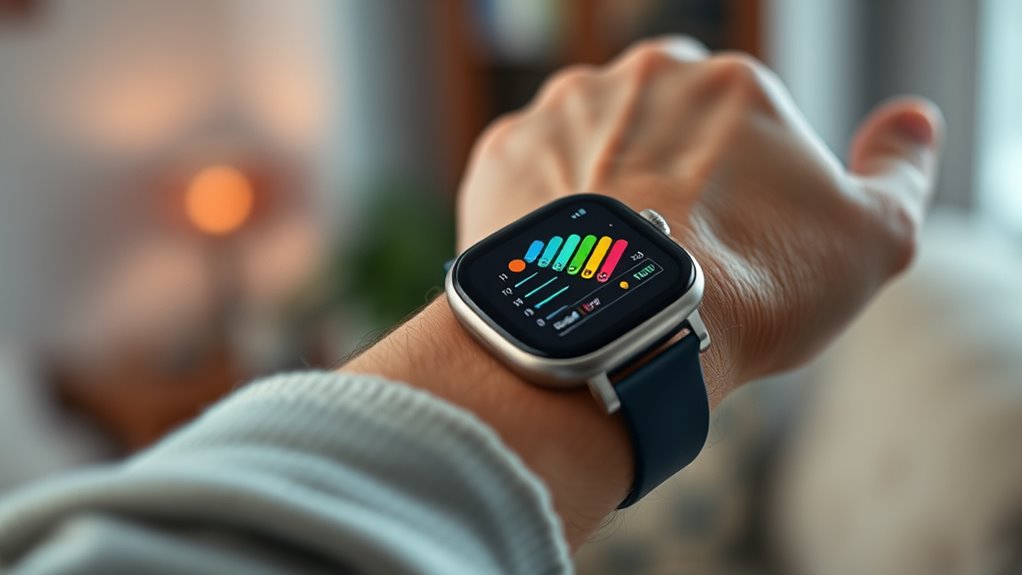
When selecting a wearable device for stress monitoring, it’s essential to take into account the specific features that align with your needs and lifestyle. Focus on sensor accuracy to guarantee reliable data, and prioritize user comfort for consistent wear. Consider these key factors:
- Sensor accuracy: Look for devices with proven precision in measuring stress indicators.
- User comfort: Choose lightweight, breathable designs that you can wear all day without discomfort.
- Battery life: Longer battery life means fewer interruptions and more consistent monitoring.
- Compatibility: Ensure the device syncs easily with your smartphone or preferred apps for seamless data access.
Additionally, selecting a device with Glycolic Acid benefits can enhance skin health and overall well-being, especially when paired with stress management routines. Incorporating accurate sensors that monitor physiological signs like heart rate variability can further improve stress detection and management.
Interpreting Data: What Your Wearable Tells You About Stress
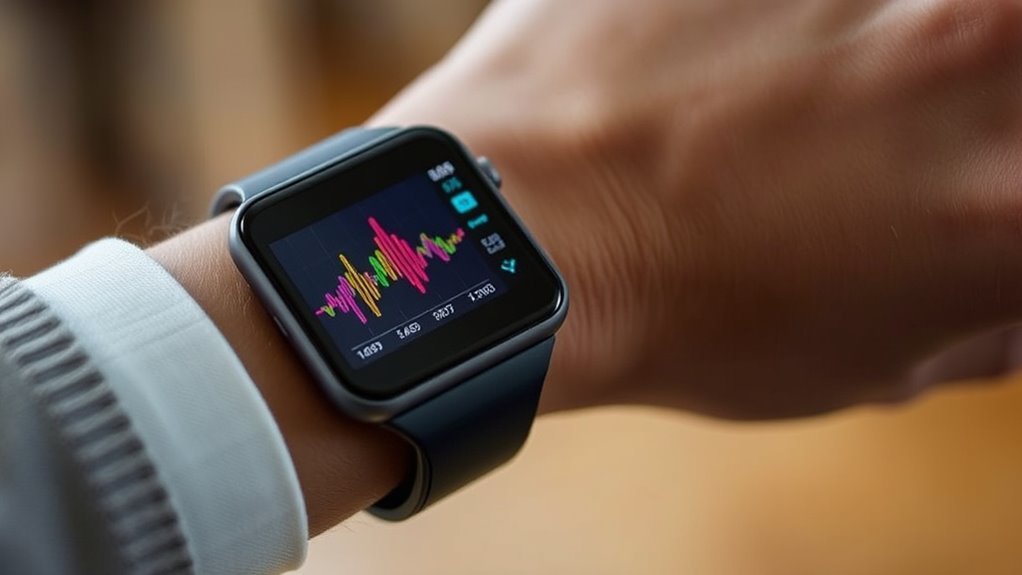
Understanding the data your wearable provides is essential for managing stress effectively. Your device tracks metrics like heart rate variability, skin conductance, and sleep quality, offering insights into your stress levels. When your wearable detects elevated heart rate or reduced sleep quality, it signals increased stress. Pay attention to these patterns and consider incorporating mindfulness techniques, such as deep breathing or meditation, to help lower stress. The device may also suggest times when your body needs rest, based on sleep data. Recognizing these signals allows you to address stress proactively. Remember, the goal isn’t just to see the numbers but to understand what they reveal about your overall well-being. Accurate interpretation of this data empowers you to make informed choices tailored to your stress management needs. Additionally, advancements in machine learning algorithms enhance the accuracy of stress detection and provide personalized recommendations for stress reduction strategies. Incorporating biometric data analysis can further refine your understanding of how your body responds to different stressors, leading to more effective management techniques. Understanding the significance of physiological signals helps you better interpret your wearable data and take appropriate actions. Being aware of sensor accuracy is also crucial, as it influences the reliability of the data you rely on for stress management. Moreover, understanding the impact of environmental factors can help contextualize fluctuations in your biometric data and improve your stress management approaches.
Practical Tips for Managing Stress Using Wearable Insights
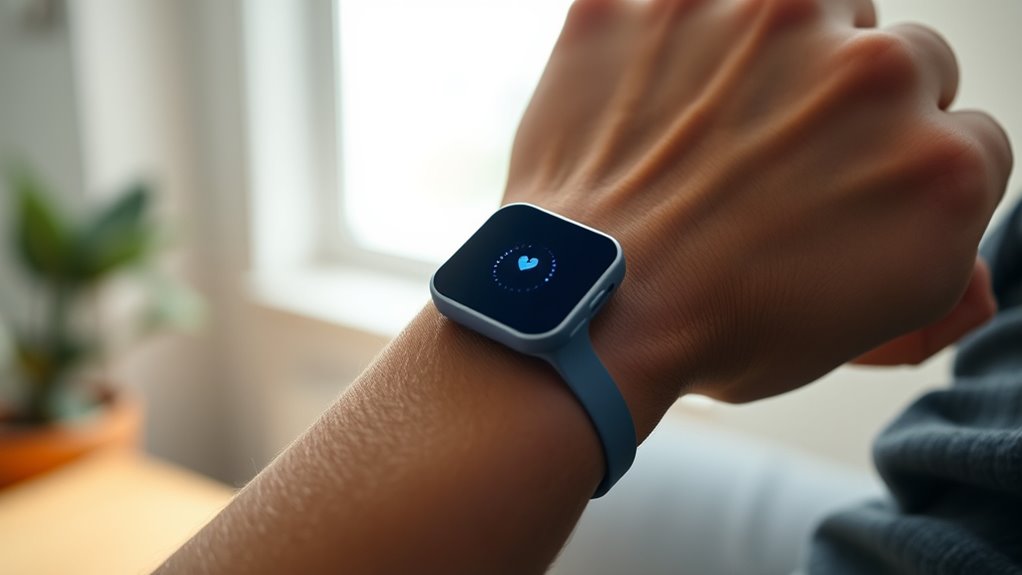
By actively applying the insights from your wearable device, you can develop practical strategies to reduce stress throughout your day. Use your data to identify stress triggers and incorporate mindfulness techniques like deep breathing or progressive muscle relaxation during high-stress moments. Prioritize sleep improvement by establishing a consistent bedtime routine and avoiding screens before bed, as your device may highlight sleep disruptions. To optimize stress management, consider these tips:
- Schedule short mindfulness pauses during busy moments
- Practice breathing exercises when heart rate spikes
- Adjust your sleep environment based on sleep data
- Incorporate gentle movement or stretching after stressful periods
- Be mindful of sleep quality factors that can influence your emotional well-being and resilience. Recognizing the importance of attention in your creative practice can also support your mental health by fostering present-moment awareness. These habits, guided by your wearable insights, can foster resilience and promote overall well-being.
Future Trends in Wearable Technology and Stress Management
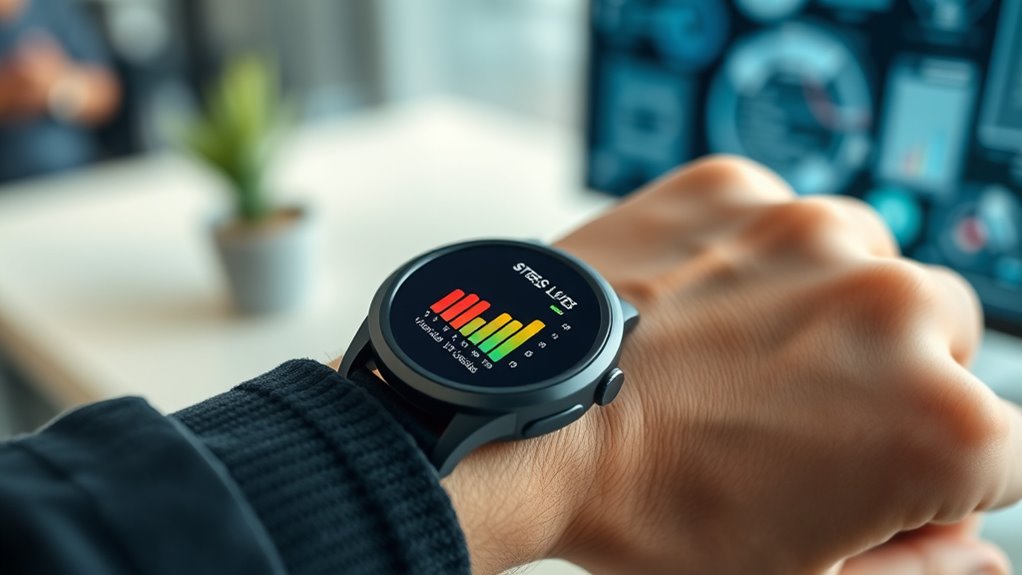
Advancements in wearable technology are poised to revolutionize stress management by offering more personalized, real-time insights and interventions. Future devices will seamlessly integrate mindfulness practices, guiding you through breathing exercises or meditation sessions tailored to your stress levels. Expect sensors that monitor sleep quality more accurately, helping you understand how rest impacts your overall stress. Wearables will adapt dynamically, suggesting specific activities or adjustments to improve your mental well-being based on your data. Enhanced algorithms will predict stress triggers before they escalate, enabling preemptive action. As these technologies evolve, you’ll have tools that not only track your stress but actively help you build resilience through targeted mindfulness and better sleep habits, making stress management more accessible and effective than ever. Recognizing the emotional needs of users, these devices will also incorporate features to support emotional expression and provide comfort during stressful times. Additionally, improved sensor accuracy will ensure that data collection is more reliable, leading to better personalized interventions. Furthermore, integrating mental health support features can foster a more holistic approach to stress reduction, addressing emotional well-being comprehensively.
Frequently Asked Questions
Can Wearable Stress Monitors Replace Professional Mental Health Assessments?
You might wonder if wearable stress monitors can replace professional mental health assessments. While they offer useful insights, they lack the clinical validation needed for accurate emotional detection. Wearables can alert you to stress, but they don’t provide the exhaustive understanding a mental health professional offers. So, rely on these devices as helpful tools, but don’t substitute them for trained assessments that consider your overall mental health.
How Accurate Are Wearable Devices in Detecting Chronic Stress?
Imagine wearing a tiny weather station on your wrist, trying to predict storms in your mind. Wearable devices can track stress indicators, but their sensor reliability varies. While some studies show they detect chronic stress with reasonable accuracy, data validation remains essential. You shouldn’t rely solely on these gadgets; they’re helpful tools but not infallible. For serious concerns, consult a mental health professional.
Are There Privacy Concerns With Wearable Stress Data Collection?
You should be aware that collecting stress data raises privacy concerns, especially regarding data security and consent procedures. When wearable devices gather your stress information, there’s a risk it could be accessed or shared without your permission. Make sure you understand how your data is protected and that proper consent procedures are followed. Being informed helps you protect your privacy while benefiting from the insights these devices offer.
What Age Groups Benefit Most From Wearable Stress Monitoring?
You might find that adolescents and the elderly benefit most from wearable stress monitoring. For adolescents, it supports their wellness by helping manage school and social pressures. For the elderly, it promotes health by tracking stress levels that could signal health issues. You can use this technology to stay aware of your stress, adapt your routines, and improve overall well-being, making it especially valuable for these age groups.
How Often Should I Calibrate My Wearable Device for Optimal Accuracy?
You might think calibration frequency is a one-and-done deal, but nope—your device needs regular attention for superior accuracy. To keep your wearable device accurate, calibrate it every few weeks or after updates. Neglecting this can lead to skewed data, making stress insights less reliable. So, don’t forget: consistent calibration is your best friend in ensuring your device accurately tracks your stress levels.
Conclusion
Think of your wearable device as a lighthouse guiding you through stormy seas of stress. When signals flicker or shadows grow, it’s a call to adjust your course—breathe, relax, reconnect. Like a steady beacon, your tech helps you navigate turbulent moments, illuminating the path to calm. Embrace these insights as your compass, steering toward serenity amid life’s chaos. With awareness and action, you’ll sail smoothly toward a healthier, more balanced you.
